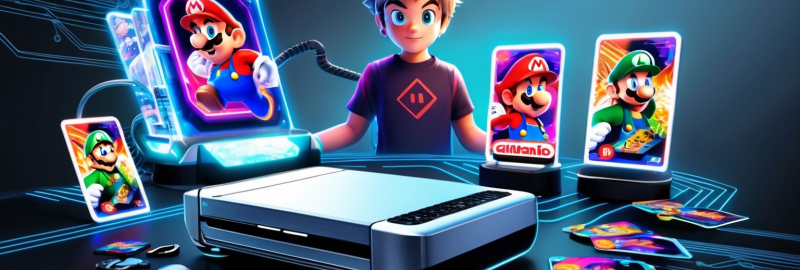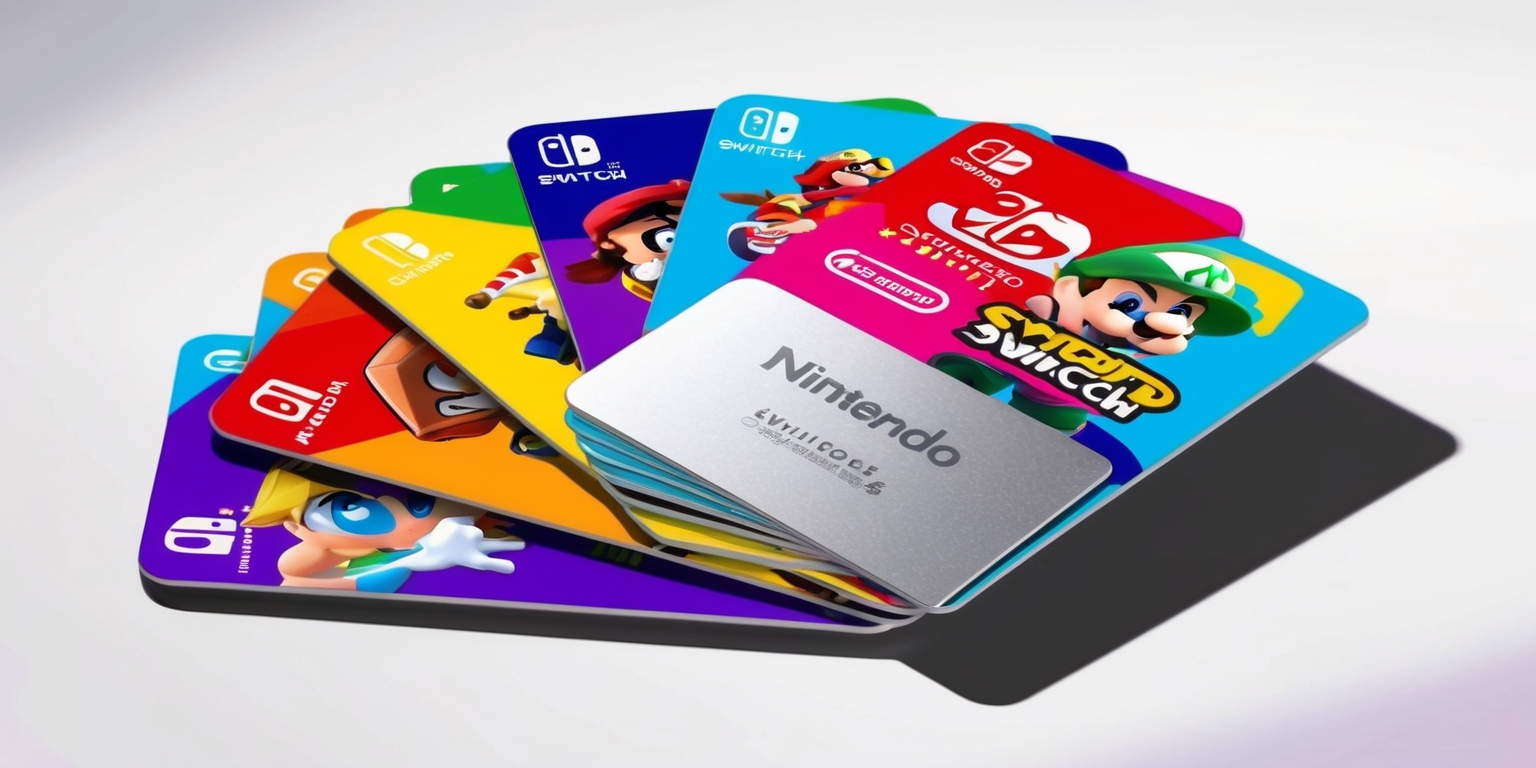
The evolution of gaming media has taken a fascinating turn with the introduction of a novel physical release for the latest Nintendo console. Rather than housing game data directly, these innovative Game-Key Cards serve as the passcode to software already downloaded onto the console. This fresh approach bridges the divide between tangible collectibles and digital downloads, inviting debate among enthusiasts and collectors alike. While the card itself appears similar to traditional game cartridges, its role is fundamentally different. As we explore this system, various facets—including its design, functionality, and market rationale—unfold to reveal a complex interplay of technology and consumer needs. This exploration delves into the nuances behind the implementation of these cards and the impact they may have on the gaming landscape.
Bridging Physical and Digital Realms
The introduction of Nintendo’s Game-Key Cards signifies a unique convergence between physical gaming media and digital data management. These cards, while looking much like traditional game cartridges, rely on a fundamentally different mechanism: they serve as authentication tokens rather than comprehensive storage units. Once inserted in the console, players trigger an initial download process over the internet, transferring the game data to the internal storage or an external microSD Express card. Despite their physical presence, the cards themselves hold no game content. Instead, their function pivots on unlocking access to the downloaded material, ensuring that if the card is absent, the game remains inaccessible. This design champions the idea of tangible ownership while embracing modern distribution methods, offering an intriguing compromise between conventional physical media and the modern digital experience.
The Core Mechanism Behind Game-Key Cards
A cornerstone of the Nintendo Switch 2 Game-Key Card system is a simple yet innovative mechanism that redefines game ownership. Upon initial use, the card initiates a download process over the internet, which stores the comprehensive game data directly on the console. The card then acts as a key for accessing the game each time it is inserted. Essentially, while the data remains resident on the device, the physical card continuously verifies its legitimacy. This method departs from the old format of self-contained cartridges, marking a shift to a licensing model embedded in physical form. This blended approach ensures that ownership can be transferred or resold since activation is tied solely to the presence of the card, rather than a permanent digital lock on an account. The design harmonizes the benefits of both physical and digital realms, addressing current market trends and consumer preferences.
The Unique Download Journey
Upon initially inserting a Game-Key Card into a Nintendo Switch 2, users embark on a process that melds tangible interaction with digital savvy. The card, visually reminiscent of older cartridges, prompts an online download that transfers the full game data directly to the console’s memory or a specialized storage device. This initial requirement for an internet connection sets the stage for a hybrid gaming experience where physical collection meets digital execution. Once the data is securely stored, the card transforms into a key, unlocking access to the game whenever it is inserted. It is an elegant solution that respects the collector’s desire for a physical artifact while leveraging the efficiency of digital downloads, ensuring that storage limitations and online connectivity remain the only trade-offs in an otherwise innovative system.
Exploring Functionality in Everyday Use

In everyday scenarios, these Game-Key Cards introduce an interesting dynamic into the routine of gaming. Their functionality hinges on the principle that the game data remains constant on the console, but access is gated by the presence of the physical card—a safeguard that many find both practical and nostalgic. Players cover their tracks by keeping the download installed on their device while ensuring that removal of the card renders the game inaccessible until the card is reinserted. This means that the physical card has a recurring and essential role, unlike disposable codes that vanish into the digital ether once activated. Consequently, the intimate relationship between the card and the device nurtures a feeling of ownership, a ritualistic appeal that seamlessly integrates traditional collectible values with modern game management strategies.
Physical Ownership and Tangible Game Media
The introduction of Game-Key Cards revitalizes the appeal of tactile game media in an age dominated by digital libraries. Many gamers appreciate the physicality of owning a tangible item that can be displayed, gifted, or even resold. Unlike standard digital downloads that vanish after activation, these cards offer a sense of permanence. Their physical nature adds an extra layer of security and nostalgia for many players who grew up collecting cartridges and discs. As physical products, they also cater to those who value the presentation and ritual of unwrapping new games. These cards can serve as memorable gifts or collector’s items, reinvigorating the market for physical game media. In this way, the system acknowledges the sentimental and practical values associated with holding a game in your hand.
Appealing to Gamers and Collectors Alike
Game-Key Cards resonate strongly with both casual gamers and dedicated collectors, offering advantages that digital-only purchases cannot match. Through their physical format, these cards provide a tangible asset that can be gifted, traded, or even resold—a practice that digital licenses do not permit. This decentralized form of ownership appeals to players who value the ability to transfer their entertainment without cumbersome digital verification tied to single-user accounts. Furthermore, the card also functions as a memento, a piece of collectible merchandise that embodies the physical culture of gaming. Despite the requirement for an initial download, the long-term benefits of physical resale and personal collection can outweigh the slight inconvenience. This dual functionality underscores a collection ethos that continues to drive interest in physical gaming products in a digital era.
Cost Considerations for Developers and Publishers
Behind the decision to implement Game-Key Cards lies a careful balance of cost efficiency and market strategy for publishers and developers. Instead of incurring higher manufacturing expenses associated with full-capacity cartridges, companies are able to distribute games in a more cost-effective manner by outsourcing the bulk of data storage to digital downloads. This process allows them to sidestep the additional financial burden while still offering a retail product that feels substantial and collectible. For smaller publishers, in particular, this method presents an economically viable solution to release physical editions without the overhead of extensive manufacturing. Even larger firms find the system financially attractive as it transfers a portion of the cost to the consumer in a form that merely authenticates game access. Consequently, this method facilitates a wider range of release strategies that accommodate varying budget constraints without sacrificing the physical presence of new games.
Retail Dynamics and Shelf-Ready Offerings
The new model of Game-Key Cards plays a significant role in revitalizing retail sales and shelf display dynamics. Physical presence in retail stores has always been a critical driver of impulse buys and gift purchases, and this format accommodates that necessity by providing an eye-catching alternative to digital codes. Retailers benefit from this tangible offering as it fills physical shelf space, ensuring that consumers have a direct point of contact with the product. The strategy also helps publishers target a broader audience that still values the experience of shopping for physical media. Browsing in-store and picking up a game can add an element of excitement that digital shopping lacks. As this approach gains momentum, it reinforces the idea that physical products still hold a pivotal role in the consumer market, even as digital distribution becomes ever more prevalent.
Navigating the FAQ Landscape
Complexity and novelty in any system invariably lead to questions, and the implementation of Game-Key Cards is no exception. Enthusiasts naturally wonder about the mechanics of downloading, storing, and accessing game data with this unique format. Common inquiries focus on how the card functions as a key, the necessity of an internet connection during the first use, and the potential limitations of storage on the console. Addressing these questions head-on, the system requires an initial online connection solely for the purpose of downloading the game. Once the full data is stored, offline play is possible, provided the card remains inserted. This open and transparent approach helps ease concerns by clarifying that while the card is necessary for access, it does not need to contain the game data itself, alleviating potential confusion for both new and seasoned players alike.
Roadmap of Upcoming Titles and Rumors
The evolving landscape of Game-Key Card releases continues to generate buzz among gamers, with both confirmed and rumored titles stirring anticipation. While the official list of Game-Key Card releases is still relatively concise, industry insiders and enthusiasts are keeping a keen eye on potential additions. Rumors circulate about several high-profile upcoming games that, if confirmed, will be available exclusively in this new format. Interested parties are encouraged to monitor official communications from both Nintendo and prominent publishers. As the official catalog expands over time, gamers can expect continual updates that outline each title's specific release details and unique aspects of its physical representation. This unfolding roadmap not only keeps collectors engaged but also underscores the dynamic interplay between emerging formats and the evolving expectations of today’s gaming community.